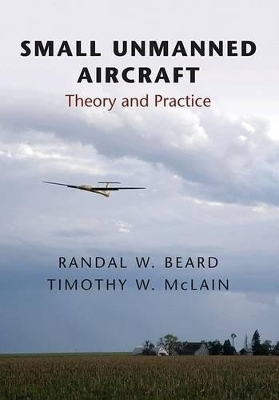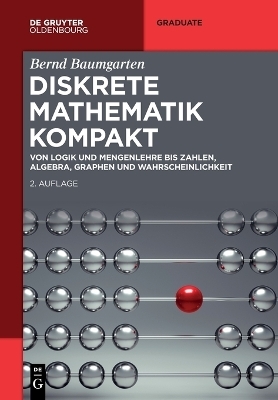
Small Unmanned Aircraft
Princeton University Press (Verlag)
978-0-691-14921-9 (ISBN)
Autonomous unmanned air vehicles (UAVs) are critical to current and future military, civil, and commercial operations. Despite their importance, no previous textbook has accessibly introduced UAVs to students in the engineering, computer, and science disciplines--until now. Small Unmanned Aircraft provides a concise but comprehensive description of the key concepts and technologies underlying the dynamics, control, and guidance of fixed-wing unmanned aircraft, and enables all students with an introductory-level background in controls or robotics to enter this exciting and important area. The authors explore the essential underlying physics and sensors of UAV problems, including low-level autopilot for stability and higher-level autopilot functions of path planning. The textbook leads the student from rigid-body dynamics through aerodynamics, stability augmentation, and state estimation using onboard sensors, to maneuvering through obstacles. To facilitate understanding, the authors have replaced traditional homework assignments with a simulation project using the MATLAB/Simulink environment. Students begin by modeling rigid-body dynamics, then add aerodynamics and sensor models.
They develop low-level autopilot code, extended Kalman filters for state estimation, path-following routines, and high-level path-planning algorithms. The final chapter of the book focuses on UAV guidance using machine vision. Designed for advanced undergraduate or graduate students in engineering or the sciences, this book offers a bridge to the aerodynamics and control of UAV flight.
Randal W. Beard is a professor in the Department of Electrical and Computer Engineering at Brigham Young University. He is the coauthor of Distributed Consensus in Multi-vehicle Cooperative Control. Timothy W. McLain is a professor in the Department of Mechanical Engineering at Brigham Young University.
Preface xi Chapter 1 Introduction 1 1.1 System Architecture 1 1.2 Design Models 4 1.3 Design Project 6 Chapter 2 Coordinate Frames 8 2.1 RotationMatrices 9 2.2 MAV Coordinate Frames 12 2.3 Airspeed,Wind Speed, and Ground Speed 18 2.4 TheWind Triangle 20 2.5 Differentiation of a Vector 24 2.6 Chapter Summary 25 2.7 Design Project 27 Chapter 3 Kinematics and Dynamics 28 3.1 State Variables 28 3.2 Kinematics 30 3.3 Rigid-body Dynamics 31 3.4 Chapter Summary 37 3.5 Design Project 38 Chapter 4 Forces and Moments 39 4.1 Gravitational Forces 39 4.2 Aerodynamic Forces andMoments 40 4.3 Propulsion Forces andMoments 52 4.4 Atmospheric Disturbances 54 4.5 Chapter Summary 57 4.6 Design Project 58 Chapter 5 Linear Design Models 60 5.1 Summary of Nonlinear Equations of Motion 60 5.2 Coordinated Turn 64 5.3 Trim Conditions 65 5.4 Transfer Function Models 68 5.5 Linear State-space Models 77 5.6 Reduced-order Modes 87 5.7 Chapter Summary 91 5.8 Design Project 92 Chapter 6 Autopilot Design Using Successive Loop Closure 95 6.1 Successive Loop Closure 95 6.2 Saturation Constraints and Performance 97 6.3 Lateral-directional Autopilot 99 6.4 Longitudinal Autopilot 105 6.5 Digital Implementation of PID Loops 114 6.6 Chapter Summary 117 6.7 Design Project 118 Chapter 7 Sensors for MAVs 120 7.1 Accelerometers 120 7.2 Rate Gyros 124 7.3 Pressure Sensors 126 7.4 Digital Compasses 131 7.5 Global Positioning System 134 7.6 Chapter Summary 141 7.7 Design Project 141 Chapter 8 State Estimation 143 8.1 Benchmark Maneuver 143 8.2 Low-pass Filters 144 8.3 State Estimation by Inverting the Sensor Model 145 8.4 Dynamic-observer Theory 149 8.5 Derivation of the Continuous-discrete Kalman Filter 151 8.6 Attitude Estimation 156 8.7 GPS Smoothing 158 8.8 Chapter Summary 161 8.9 Design Project 162 Chapter 9 Design Models for Guidance 164 9.1 AutopilotModel 164 9.2 Kinematic Model of Controlled Flight 165 9.3 Kinematic Guidance Models 168 9.4 Dynamic Guidance Model 170 9.5 Chapter Summary 172 9.6 Design Project 173 Chapter 10 Straight-line and Orbit Following 174 10.1 Straight-line Path Following 175 10.2 Orbit Following 181 10.3 Chapter Summary 183 10.4 Design Project 185 Chapter 11 Path Manager 187 11.1 Transitions BetweenWaypoints 187 11.2 Dubins Paths 194 11.3 Chapter Summary 202 11.4 Design Project 204 Chapter 12 Path Planning 206 12.1 Point-to-Point Algorithms 207 12.2 Coverage Algorithms 220 12.3 Chapter Summary 223 12.4 Design Project 224 Chapter 13 Vision-guided Navigation 226 13.1 Gimbal and Camera Frames and Projective Geometry 226 13.2 Gimbal Pointing 229 13.3 Geolocation 231 13.4 Estimating Target Motion in the Image Plane 234 13.5 Time to Collision 238 13.6 Precision Landing 240 13.7 Chapter Summary 244 13.8 Design Project 245 APPENDIX A: Nomenclature and Notation 247 APPENDIX B: Quaternions 254 B.1 Quaternion Rotations 254 B.2 Aircraft Kinematic and Dynamic Equations 255 B.3 Conversion Between Euler Angles and Quaternions 259 APPENDIX C: Animations in Simulink 260 C.1 Handle Graphics inMatlab 260 C.2 Animation Example: Inverted Pendulum 261 C.3 Animation Example: Spacecraft Using Lines 263 C.4 Animation Example: Spacecraft Using Vertices and Faces 268 APPENDIX D: Modeling in Simulink Using S-Functions 270 D.1 Example: Second-order Differential Equation 270 APPENDIX E: Airframe Parameters 275 E.1 Zagi Flying Wing 275 E.2 Aerosonde UAV 276 APPENDIX F: Trim and Linearization in Simulink 277 F.1 Using the Simulink trim Command 277 F.2 Numerical Computation of Trim 278 F.3 Using the Simulink linmod Command to Generate a State-space Model 282 F.4 Numerical Computation of State-space Model 284 APPENDIX G: Essentials from Probability Theory 286 APPENDIX H: Sensor Parameters 288 H.1 Rate Gyros 288 H.2 Accelerometers 288 H.3 Pressure Sensors 289 H.4 Digital Compass/Magnetometer 289 H.5 GPS 290 Bibliography 291 Index 299
| Erscheint lt. Verlag | 26.2.2012 |
|---|---|
| Zusatzinfo | 126 line illus. 8 tables. |
| Verlagsort | New Jersey |
| Sprache | englisch |
| Maße | 178 x 254 mm |
| Gewicht | 794 g |
| Themenwelt | Mathematik / Informatik ► Mathematik |
| Naturwissenschaften | |
| Technik ► Fahrzeugbau / Schiffbau | |
| Technik ► Luft- / Raumfahrttechnik | |
| Technik ► Maschinenbau | |
| ISBN-10 | 0-691-14921-6 / 0691149216 |
| ISBN-13 | 978-0-691-14921-9 / 9780691149219 |
| Zustand | Neuware |
| Informationen gemäß Produktsicherheitsverordnung (GPSR) | |
| Haben Sie eine Frage zum Produkt? |
aus dem Bereich


